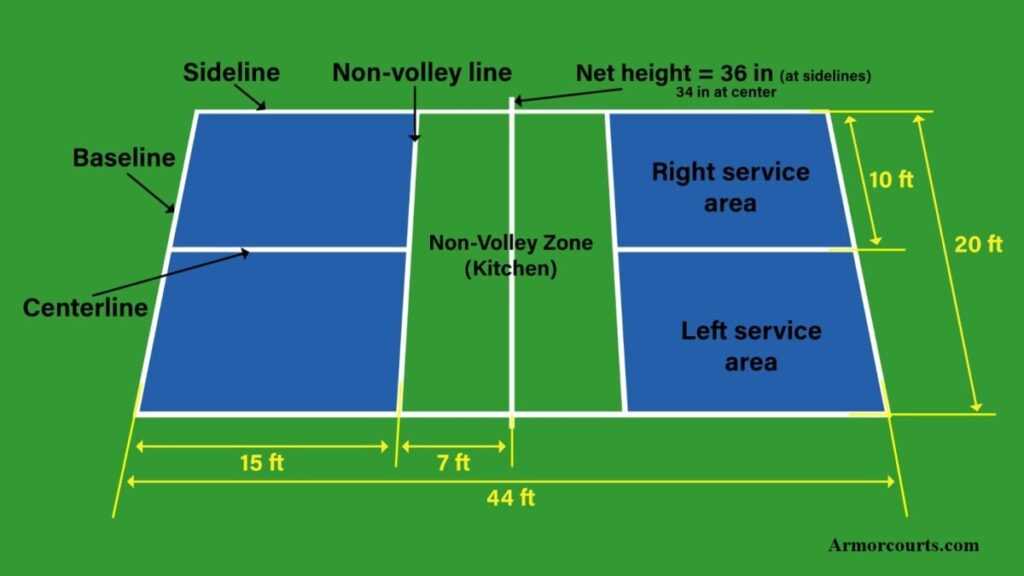Economical Pickleball Court Construction for Homes and Communities
Economical Pickleball Court Construction for Homes and Communities
Blog Article
Lasting Practices in Pickleball Court Construction You Should Know
As the appeal of pickleball remains to increase, so also does the need for lasting practices in court construction. This approach not just addresses environmental concerns yet also boosts the long life and capability of the courts. From picking environmentally friendly products to applying effective drain and energy-saving lighting options, there are countless techniques to consider. Yet, the impact of these methods extends far beyond the court itself. Recognizing just how each element adds to a much more sustainable future welcomes better exploration right into the detailed balance in between entertainment growth and environmental stewardship.
Picking Eco-Friendly Materials
Picking environmentally friendly products is a critical step in the construction of sustainable pickleball courts. The option of sustainable products not just reduces environmental influence yet likewise improves the longevity and efficiency of the court. Trick products consist of reused rubber for the surface, which uses outstanding durability and shock absorption while diverting waste from garbage dumps.
Additionally, using locally sourced products reduces transportation emissions and supports regional economic situations. Pickleball court construction. Making use of native hardwoods for fencing and seats can give a lasting aesthetic while guaranteeing strength against the aspects.
Incorporating absorptive products for court foundations can even more contribute to sustainability by enabling all-natural water drainage and lowering overflow. These choices not just shield neighborhood environments yet additionally promote much healthier play atmospheres.
Efficient Drain Solutions
While the option of green materials is important, applying effective water drainage services is equally critical for preserving lasting pickleball courts. Proper drain not just secures the court surface from water damage however additionally reduces disintegration and overflow, promoting ecological honesty.
Efficient drain systems can consist of permeable paving, which enables water to infiltrate the ground rather than pooling on the surface area. This decreases the chance of standing water, which can lead to mold and other upkeep concerns. In addition, integrating tactically positioned water drainage channels and swales can direct excess water away from the court location, making certain a completely dry having fun surface and avoiding soil erosion.
Making use of native plant life in the landscape design around the courts can additionally boost water drainage by taking in excess water and minimizing overflow. These plants call for much less watering and promote biodiversity, aligning with sustainable practices.
Additionally, it is vital to regularly maintain the drain system to guarantee its lasting efficiency. This includes clearing up particles and monitoring for clogs. By prioritizing efficient water drainage options, pickleball court contractors can considerably add to the sustainability and durability of the facility, eventually profiting both players and the atmosphere.
Energy-Efficient Lighting Options
As the demand for pickleball proceeds to grow, incorporating energy-efficient lights choices into court layout has come to be increasingly vital for sustainability. Conventional illumination systems frequently take in too advice much power, adding to higher operational costs and ecological impact. As a result, adopting contemporary, energy-efficient modern technologies is necessary for both new buildings and improvements.
LED (Light Emitting Diode) lights sticks out as a premier selection as a result of its longevity and advice energy savings (Pickleball court construction). Contrasted to traditional lights, LEDs use about 75% much less power and can last approximately 25 times much longer, substantially lowering maintenance costs. The directional nature of LED lights lessens light contamination, ensuring that lighting is concentrated on the court rather than bordering areas.

Sustainable Surface Area Alternatives
Discovering sustainable surface choices for pickleball courts has gotten grip amongst gamers and building contractors alike. The emphasis on green products not just aligns with the expanding environmental understanding yet additionally boosts the performance and toughness of the courts.
This material provides exceptional shock absorption, decreasing the risk of injuries for gamers while advertising sustainability. These tiles are easy to mount and replace, and their versatility permits for different court configurations.
Natural grass courts are also becoming a sustainable option, advertising biodiversity and lowering the heat island impact. They need regular maintenance and water, which may not line up with all sustainability objectives.

Water Preservation Techniques
One more effective strategy find more entails the setup of rainwater harvesting systems. These systems accumulate and save rain for use in preserving court surfaces and landscape design. This technique not only conserves safe and clean water however additionally minimizes reliance on metropolitan sources.
Furthermore, using drought-resistant landscaping around the courts is important. Indigenous plants need much less water and are better adapted to neighborhood climate conditions, hence decreasing general water intake. Furthermore, making use of effective watering systems, such as drip irrigation, makes sure that water is supplied straight to plant origins, reducing dissipation and waste.
Final Thought
Integrating lasting methods in pickleball court building substantially contributes to ecological conservation and resource performance. By focusing on these techniques, the building of pickleball courts can line up with broader environmental objectives while advertising long life and functionality within neighborhoods.
As the appeal of pickleball proceeds to rise, so also does the need for sustainable techniques in court building.Picking green materials is an important action in the building and construction of sustainable pickleball courts. By prioritizing energy-efficient lights alternatives, pickleball court fabricators can contribute to a much more lasting future while fulfilling the demands of stakeholders and players alike.Integrating sustainable surface options not only enhances the efficiency of pickleball courts yet additionally leads the method for carrying out effective water conservation techniques.Incorporating lasting methods in pickleball court building considerably contributes to environmental conservation and resource effectiveness.
Report this page